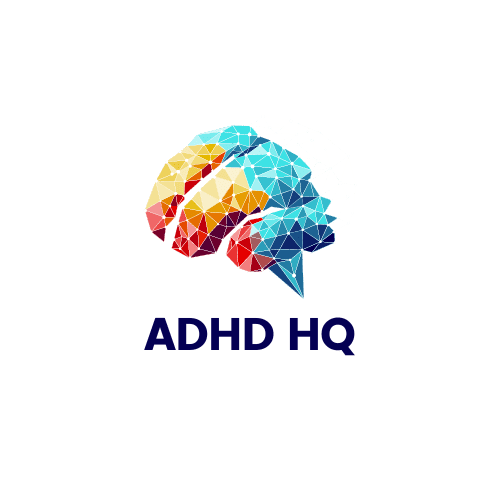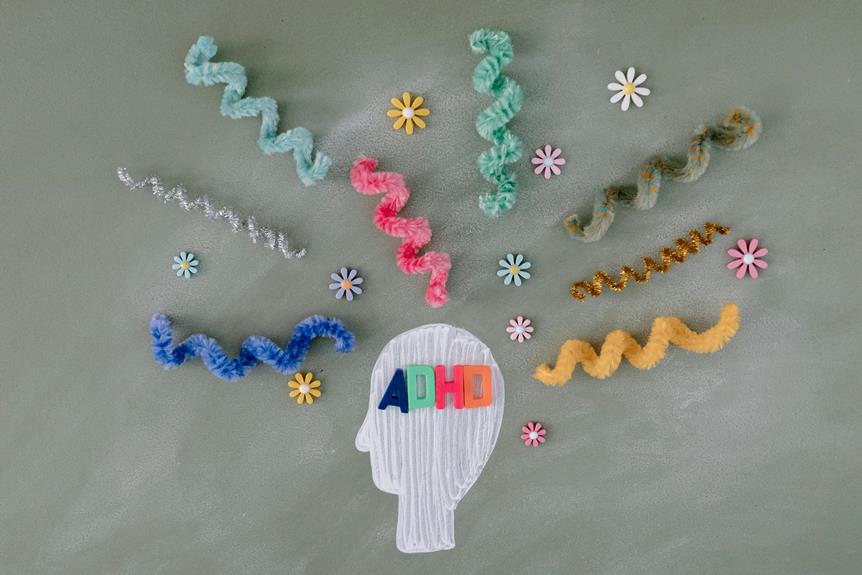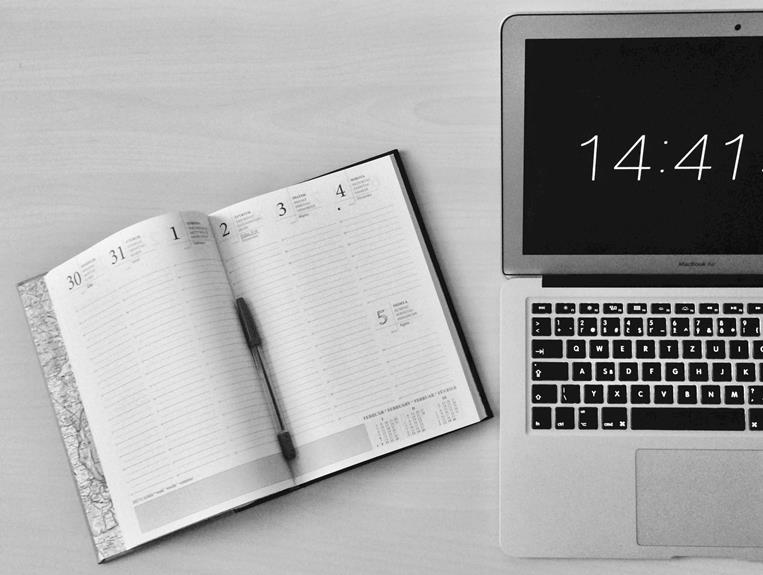Adhd Texting Habits
When I received a text asking about weekend plans, my impulsivity led me to reply with a quick 'I'll let you know,' only to completely forget to follow up later.
Have you ever wondered how ADHD can influence texting habits and communication styles? Understanding the impact of ADHD on texting behaviors can offer valuable insights into managing these challenges effectively.
Let's explore the common patterns, strategies for improvement, and the importance of open dialogue in enhancing texting experiences for individuals with ADHD.
Key Takeaways
- Erratic and emotionally charged responses are common in ADHD texting habits.
- Impulsivity and forgetfulness lead to sporadic and unpredictable replies.
- Inconsistencies in response times and neglect impact digital interactions.
- Strategies like setting reminders and using text prediction aid in managing texting challenges.
Common Texting Patterns

ADHD individuals frequently display erratic and emotionally charged texting behaviors, reflecting challenges in maintaining consistent communication patterns. Their texting habits often involve sporadic and unpredictable replies, stemming from difficulties in focusing on extended conversations.
Emotionally, they may struggle to regulate their responses effectively, leading to impulsive and jumbled messages. Forgetfulness and disorganization can further impact their texting patterns, resulting in unread messages or delayed responses.
Additionally, handling a high volume of messages at once can overwhelm individuals with ADHD, making it challenging to keep track of conversations. These texting behaviors highlight the communication challenges faced by individuals with ADHD, as they navigate through messaging overload and aim to establish more structured and coherent texting habits to enhance their interactions.
Understanding these common texting patterns can offer insights into the unique ways in which ADHD influences individuals' communication styles.
Challenges in Texting Communication
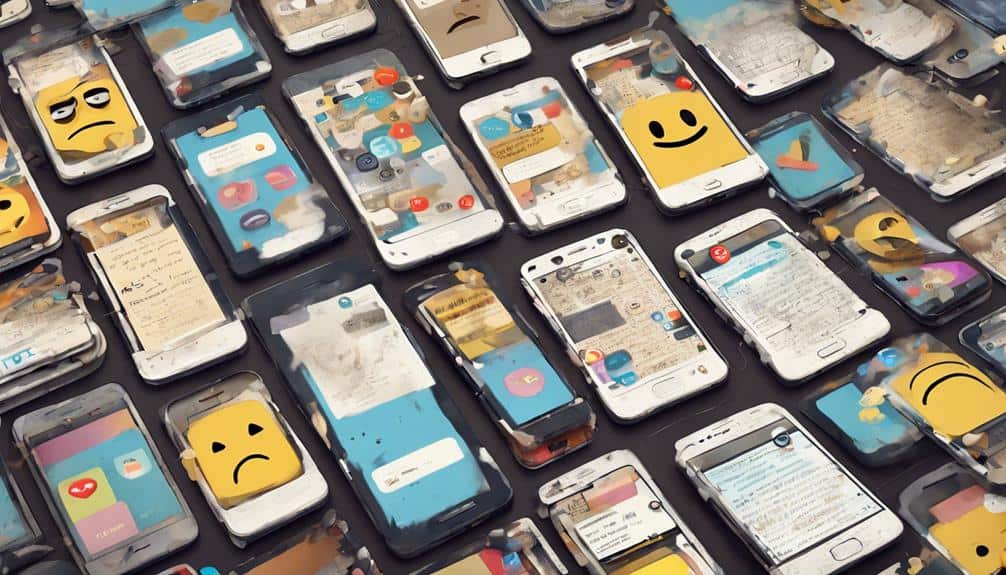
Struggling with maintaining consistent texting communication can pose significant challenges for individuals with ADHD, impacting their interactions with others. The difficulties stemming from impulsivity, forgetfulness, and inattention can lead to unintentional ghosting, affecting communication with friends. Neurodiverse individuals often find it challenging to adhere to texting etiquette and may struggle with responding promptly to messages or calls. This inconsistency in texting habits can create misunderstandings and strain relationships.
Forgetfulness plays a significant role in the challenges faced by individuals with ADHD in texting communication. Forgetting details of plans or important conversations is common, leading to unintentional ghosting and misunderstandings. Impulsivity also contributes to the struggle, as individuals might impulsively send messages without proper forethought, causing communication breakdowns. Inattention further compounds these issues, making it hard for individuals to stay engaged in conversations and respond in a timely manner. These challenges highlight the importance of developing effective strategies to overcome these hurdles in texting communication for individuals with ADHD.
Strategies for Effective Texting
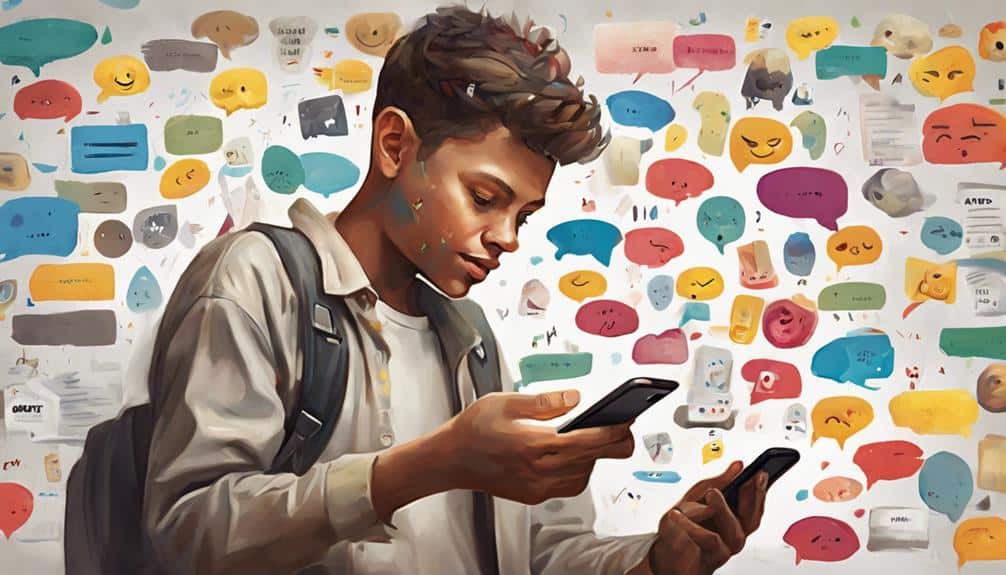
Forgetfulness, impulsivity, and inattention can greatly impact texting communication for individuals with ADHD, prompting the need for effective strategies to enhance their interactions.
Setting reminders and establishing scheduled times for texting can help maintain consistency in communication habits. Utilizing text prediction or voice-to-text features is beneficial for composing messages efficiently, especially for those struggling with impulsivity or inattention.
Incorporating visual aids such as color-coding or labeling messages can assist in organizing and prioritizing texts, leading to better responsiveness. Developing a personalized texting routine or structure can support individuals with ADHD in managing their communication and reducing feelings of overwhelm.
Seeking support from friends or partners to set clear communication expectations and strategies can greatly enhance texting experiences for individuals with ADHD. By implementing these strategies, individuals with ADHD can improve their texting habits and enhance their overall communication skills.
Impact of ADHD on Texting Habits
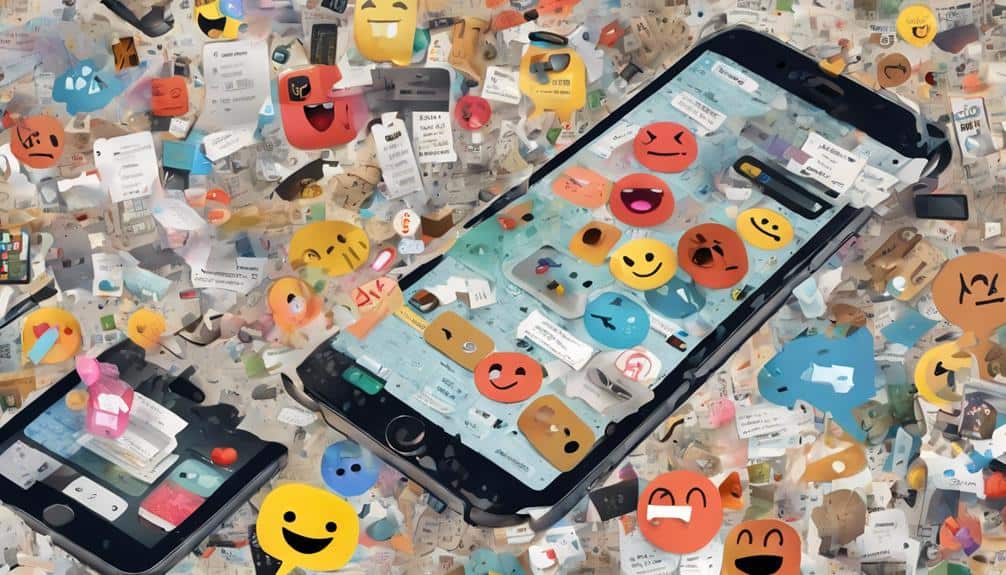
In individuals with Attention Deficit Hyperactivity Disorder, the impact on texting habits manifests through inconsistencies in response times and unintentional neglect in digital interactions. People with ADHD may struggle to maintain consistent communication due to impulsivity, forgetfulness, and inattention, affecting their texting habits. This can lead to unintentional ghosting of friends, causing misunderstandings and strained relationships.
The struggles faced by individuals with ADHD in managing digital interactions can result in feelings of guilt for neglecting friends or giving off the impression of disinterest. Responding promptly to text messages or calls can be challenging for those with ADHD, further complicating communication dynamics and hindering relationship development.
Symptoms like forgetfulness of plans, unintentional ghosting, and difficulties in responding to messages play a significant role in shaping the texting habits and communication experiences of individuals with ADHD.
Improving Communication Skills
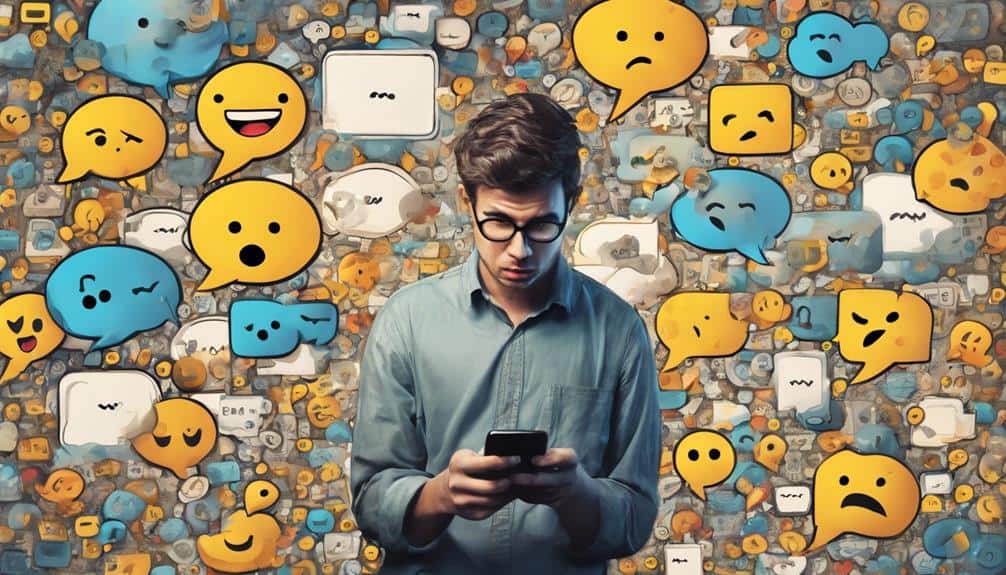
Exploring the complexities of digital communication with ADHD requires implementing tailored strategies to enhance understanding and connection in text-based interactions. Improving communication skills involves practicing active listening and empathy to foster better comprehension and stronger relationships through text messages.
Setting clear boundaries and expectations in texting can help prevent misunderstandings and promote effective communication dynamics. Utilizing emojis and GIFs thoughtfully adds emotional depth and clarity to text conversations, aiding in conveying tone and intention more accurately.
Taking breaks during texting exchanges to process information and respond thoughtfully can have a substantial impact on the quality of communication. Personalized strategies, such as color-coding messages or setting reminders, play a vital role in supporting consistent and effective texting habits for individuals with ADHD.
Balancing Digital Communication
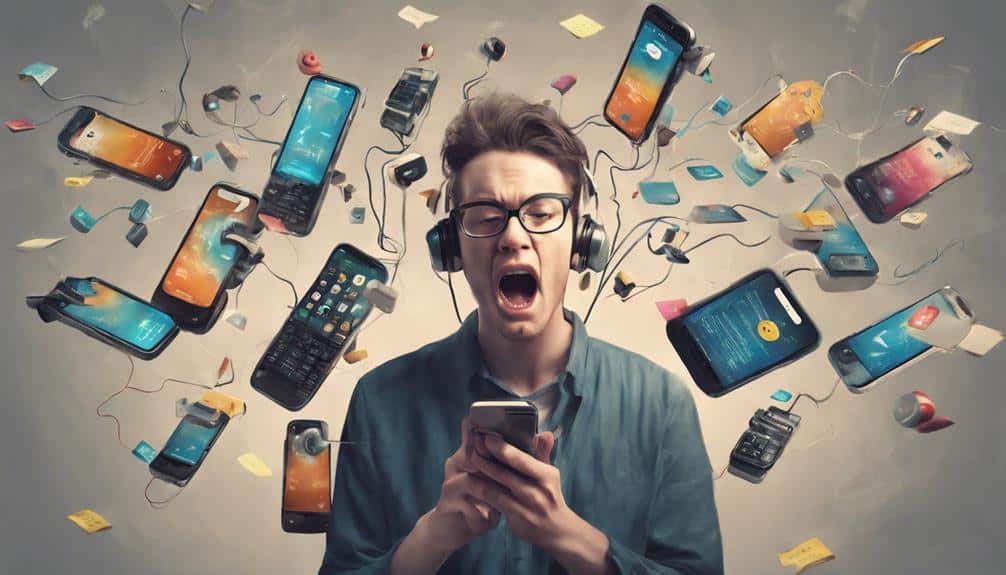
Balancing digital communication requires us to set clear screen time boundaries and be mindful of our message responses. By establishing limits on our availability and response times, we can maintain healthier relationships and personal well-being.
Adapting to societal norms while prioritizing our emotional needs can help us navigate digital communication more effectively.
Screen Time Boundaries
Establishing clear boundaries for screen time is vital in effectively managing digital communication and enhancing interpersonal interactions. Research indicates that excessive screen time can have negative impacts on mental health and relationships. By setting limits on phone usage, individuals can improve their productivity, focus, and overall well-being. Here are key benefits of implementing screen time boundaries:
- Reducing distractions
- Enhancing sleep quality
- Promoting healthier relationships
Striking a balance between screen time and offline activities is important for maintaining a healthy lifestyle. By being mindful of our screen time habits and setting boundaries, we can create space for meaningful real-life interactions while also utilizing digital communication effectively.
Mindful Message Responses
Implementing mindful message responses is crucial for individuals with ADHD to navigate digital communication effectively and reduce impulsive texting habits. Practicing mindfulness in message replies allows for a moment of reflection before responding, helping to decrease impulsivity in texting behaviors.
By taking the time to contemplate the message received, individuals can craft more thoughtful and intentional responses, leading to improved communication dynamics and enhanced understanding in digital interactions. Mindful message responses enable those with ADHD to avoid impulsive or reactive texting tendencies, promoting a balanced approach to digital communication.
This intentional communication style fosters deeper connections and guarantees that responses are well-considered, contributing to more meaningful and effective exchanges in the digital domain.
Frequently Asked Questions
How Can ADHD Medication Affect Texting Habits?
Taking medication can impact texting habits by affecting response speed, attention span, and communication challenges. Strategies like setting reminders, minimizing digital distractions, and improving typing skills can help maintain message clarity and enhance social interactions.
Are There Any Specific Texting Apps or Tools That Can Help Individuals With ADHD Communicate More Effectively?
When it comes to communication strategies for individuals with ADHD, technology solutions like specialized apps, time management tools, and notification settings can be beneficial. These tools help in managing distractions and improving focus, supporting effective communication.
Can ADHD Texting Habits Impact Relationships With Friends and Family Members?
Communication challenges in relationships can arise from various factors. Social interactions may suffer due to misunderstandings. Emotional responses play a role in shaping relationship dynamics. Support systems aid in managing time and distractions, setting boundaries, and fostering self-awareness.
How Can Individuals With ADHD Improve Their Text Message Response Times?
Improving text response times involves time management, setting reminders, and mindful communication. Prioritizing messages, quick replies, and limiting notifications help. Technology boundaries and distraction control are essential. Understanding social cues aids in efficient communication.
Are There Any Potential Risks or Downsides to Relying Heavily on Texting for Communication With Adhd?
Relying heavily on texting may hinder social skills development, limit emotional cues, and lead to misunderstandings. It can also pose challenges in multitasking, time management, and attention span. Phone calls offer more direct communication, reducing barriers.
Conclusion
Just as a skilled chef balances flavors to create a delicious dish, individuals with ADHD can balance their texting habits to create meaningful connections. By acknowledging their challenges and implementing personalized strategies, they can navigate the digital world with grace.
Like a symphony conductor harmonizing different instruments, collaborative efforts and open communication can help bridge understanding between neurodiverse individuals and their peers. Embracing diversity in communication styles enriches relationships and fosters empathy in the digital age.
